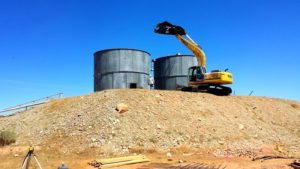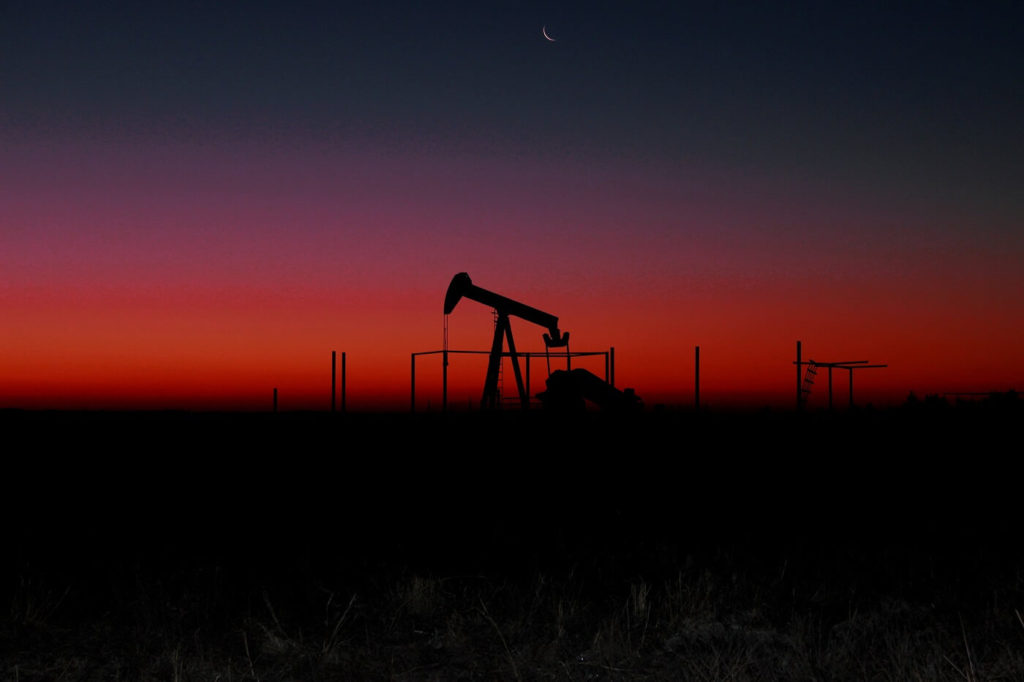Above, an oil rig sits dormant. When companies abandon wells, taxpayers are left to foot the cleanup costs.
As oil and gas wells are abandoned, a Government Accountability Office report shows that BLM is not accurately accounting for orphaned wells or the taxpayer risk for cleaning them up.
Written by Powder River Basin Resource Council.
In June, the Government Accountability Office (GAO) released a new report that finds the Bureau of Land Management (BLM) is not accurately accounting for orphaned onshore oil and gas wells, or the risk that taxpayers will have to shoulder the cleanup risks.
The report, Bureau of Land Management Needs to Improve Its Data and Oversight of Its Potential Liabilities, finds a striking lack of data tracking across the agency on the number and public costs of orphaned wells, which have grown in number since GAO last examined the issue in 2010. The report states that BLM employees at the 13 field offices that manage 80% of the nation’s onshore oil and gas wells “identified about $46.2 million in estimated potential reclamation costs associated with orphaned wells and inactive wells that officials deemed to be at risk of becoming orphaned.”

In a 2011 report, GAO recommended an increase in BLM’s minimum reclamation bond amounts from the current levels, which were set in the 1950s and 1960s. BLM concurred with the recommendation, but has not followed through. In today’s report, GAO noted that “[o]fficials from 9 of the 20 BLM offices and 1 stakeholder told us that BLM faces challenges related to federal minimum bond amounts that in their opinion are too low” but that “[a] ccording to BLM headquarters officials, the agency does not require that operators provide full liability bonds.”
Marge and Bill West, who ranch near Arvada, Wyo., and are members of Powder River and Western Organization of Resource Councils (WORC), made the following statements on behalf of the organizations:
“It’s the taxpayer who pays, and the landowner. First we had all of the impacts of gas development – drilling, roads, and water discharges that drained groundwater supplies, destroyed hay meadows and killed hundreds of cottonwood trees on our ranch. Now we have 100 idle wells. When they drilled these wells they didn’t drill them off at the edge of the field. They often drilled them in the middle of fields where it’s easiest to drill because the land is flat. So, it’s difficult to work around these wells, but there they sit, getting in the way until taxpayers come up with the millions it will take to plug and reclaim them.” – Marge West
“We have close to 100 wells on our place, and none of them have been reclaimed yet. The company – High Plains Gas – went bankrupt and left several thousand wells in Wyoming. The state is paying to clean up the private and state-owned wells, but BLM didn’t have enough in bonds to cover the cost of reclaiming the federal wells. That’s the problem. It’s high time the federal government required adequate reclamation bonds to cover cleanup costs, which is a simple solution to prevent the problem in the first place.” – Bill West
Check out WORC’s state-by-state oil and gas mapping project.
Read more stories about oil and gas here.
Read more:
Colorado Oil and Gas Activists Hopeful, Despite Ballot Defeat
Fracking Cover-Up Continues Groundwater Contamination Disaster in Pavillion, Wyoming
WORC Files Injunction to Stop Secret Royalty Policy Committee Meetings


